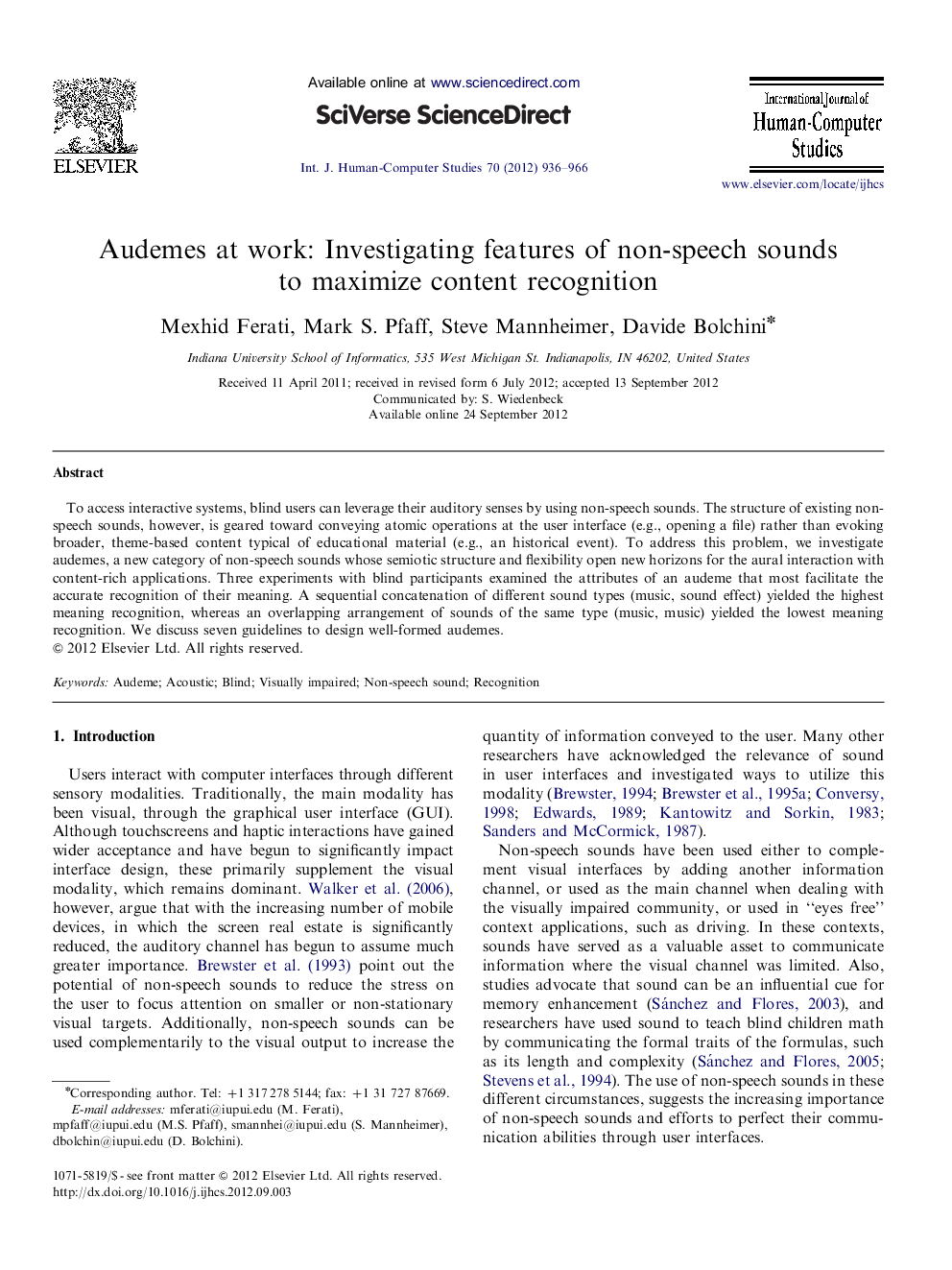| کد مقاله | کد نشریه | سال انتشار | مقاله انگلیسی | نسخه تمام متن |
|---|---|---|---|---|
| 401929 | 1439002 | 2012 | 31 صفحه PDF | دانلود رایگان |

To access interactive systems, blind users can leverage their auditory senses by using non-speech sounds. The structure of existing non-speech sounds, however, is geared toward conveying atomic operations at the user interface (e.g., opening a file) rather than evoking broader, theme-based content typical of educational material (e.g., an historical event). To address this problem, we investigate audemes, a new category of non-speech sounds whose semiotic structure and flexibility open new horizons for the aural interaction with content-rich applications. Three experiments with blind participants examined the attributes of an audeme that most facilitate the accurate recognition of their meaning. A sequential concatenation of different sound types (music, sound effect) yielded the highest meaning recognition, whereas an overlapping arrangement of sounds of the same type (music, music) yielded the lowest meaning recognition. We discuss seven guidelines to design well-formed audemes.
► We introduce audemes as new non-speech sounds.
► Audemes are designed to aurally communicate articulated content.
► Audemes made of serial sounds facilitate meaning recognition.
► Females outperform males in recognizing audeme content.
► We propose guidelines to design well-formed audemes.
Journal: International Journal of Human-Computer Studies - Volume 70, Issue 12, December 2012, Pages 936–966